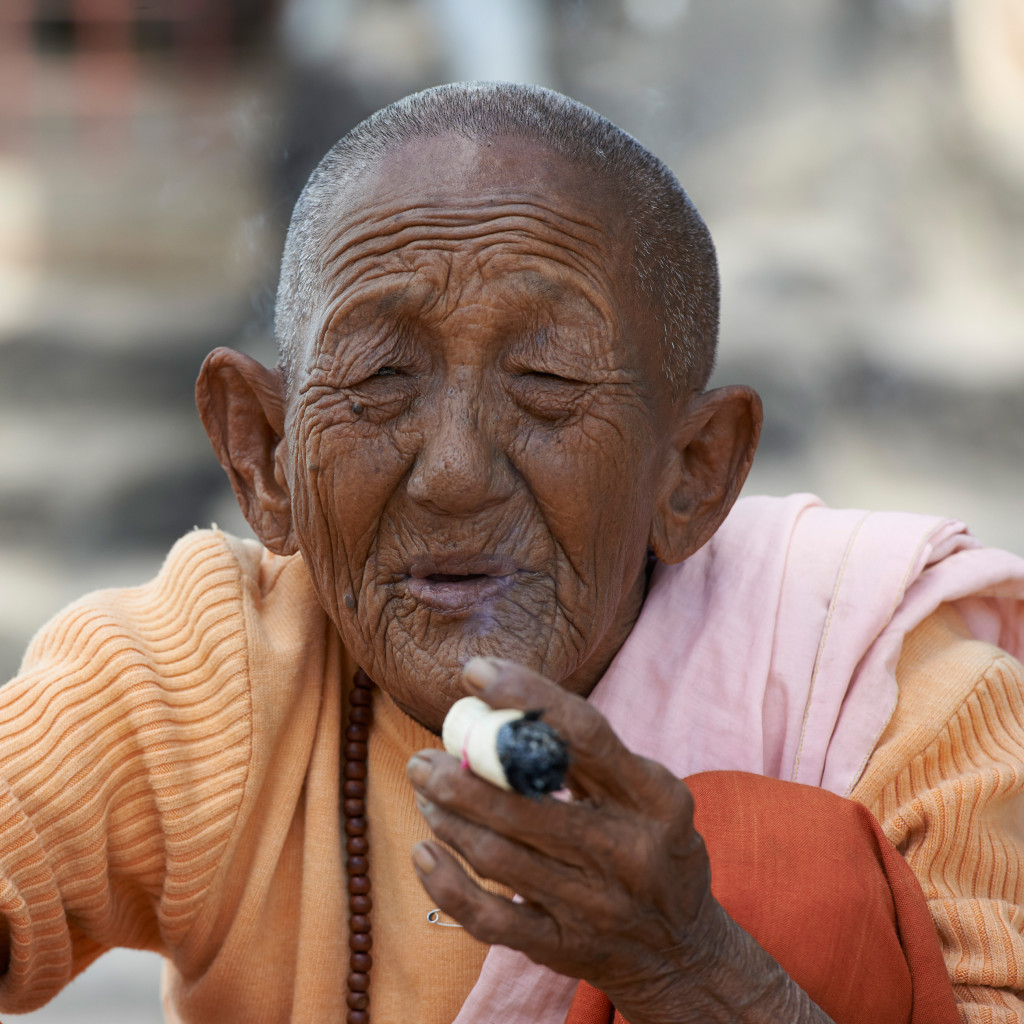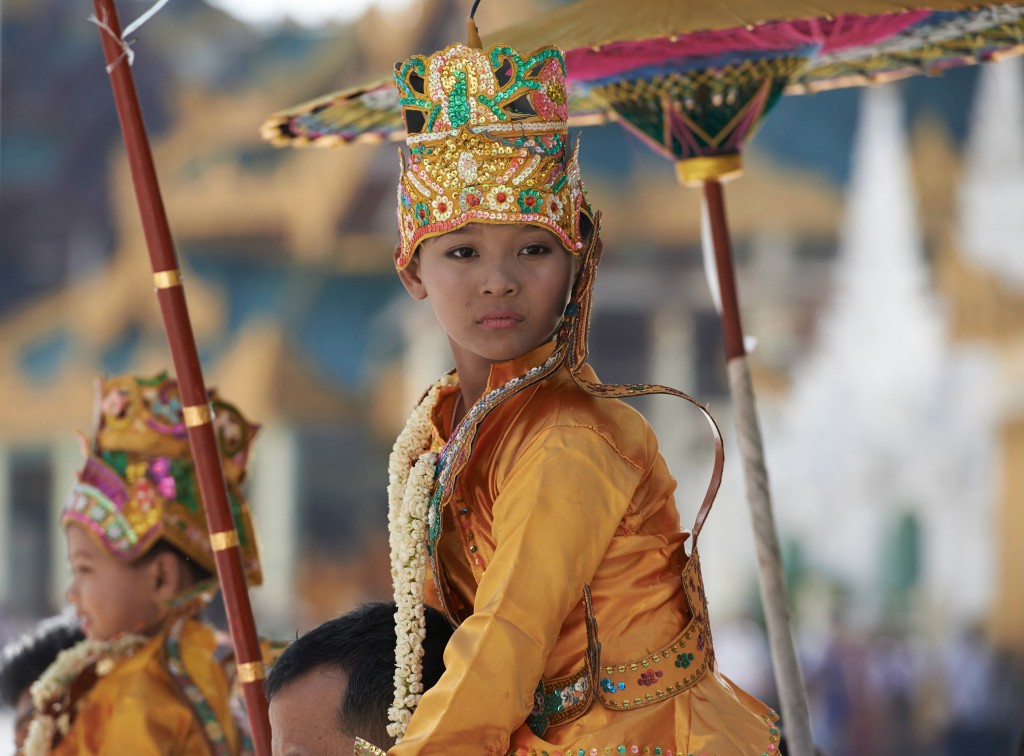I don’t believe in sneaking photographs of people. Street photographers may argue that asking a person to pose for an image is taking them out of their natural routine and, therefore, ruining the decisive moment*. I couldn’t disagree more. My objective for taking portraits is to make contact with people, to establish a two-way connection that reflects their openness toward me and thus, indirectly, toward the viewers of the image themselves. In this way, the portraits speak a thousand words about their subjects and the environment they live in.
*Beware of the legal rules for photographing people, which vary from country to country. In short, if you don’t have a consent release, you cannot use these images for commercial purpose. The models can sue you, because you, or your publisher, are using their image to advertise a product or service to which they may not agree. Yet it’s fine to use an image for editorial purposes, for example, this blog post, because I am not promoting or selling any product.
The shot discipline required to make best use of high pixel counts, aggressively looking DSLRs with long lenses mounted on a tripod or monopod (a setup that probably costs more than some peoples’ homes), and considerations about the light and background excludes the run and gun approach anyway. It takes usually a large number of images to obtain a natural look of the person and a final image that doesn’t look staged.
I have found that most people like to have their picture taken. Think if a photographer from a far away place asked you; would you say no? Being 195 cm tall, I have been approached often by Asian girls. This has somewhat faded, which I believe is due to Asians getting taller, rather than me getting less attractive.
People respond well to respect towards themselves and their culture, knowing the local language is important to interact. Where communication problems are to be expected, it is good to hire a guide through a local agency, mentioning the photographic ambitions. Moreover, guides can help to approach a stranger and ask for permission. But avoid those self-proclaimed guides waiting in front of iconic places; you will for sure end up at the wrong place at the wrong time.
I always offer to send prints, but I am also not offended when the person asks for small change. In particular with street vendors, you can break the ice by buying a little souvenir.
So here are some stories behind the images. More portraits can be found in this post. All images were shot with the Nikon D800e and the 70-200 f/2.8 VR II (at 150 mm and f5.6).
Nun smoking cheroot, Myanmar: In Myanmar women are often seen smoking large cigars, called cheroot, made from mixtures of dried, seasoned softwood and crushed tobacco wrapped in a dried leaf of carbia myxa. I met this nun outside the Hpo Win Daung Caves in Monywa, Myanmar and was attracted by her rejoicing in the cigar. Having never smoked I was not able to check these out.

Novice Nun, Shinbyu ceremony, Yangoon, Myanmar: Most tourists (and worshipers) visit the Shewadong Pagoda in the morning and late afternoon. I went back at noon to reshoot an image under different lighting conditions. In this way I “tumbled” into a Shinbyu ceremony, which is a novitiation ceremony that symbolises prince Siddhartha’s departure from the royal palace. The kids are dressed in silk embroidered with gold, as a royal princess or queen. They ride on the shoulders of their fathers and are shielded from the sun by a gold umbrella carried by another member of the family. The Shwedagon Pagoda is obviously the Shinbyu main location in Yangon. This image, featuring on my home page, is one of my all-time favorites, not only because of the perfect match of the subject, context, and composition.

Himba girl, Kunene region, Namibia: The Himba are indigenous people with an estimated population of no more than 50,000 living in the Kunene region in northern Namibia. Most women are dressed traditionally with skirt-like clothing made from calfskins, covering themselves with otjize paste, a mixture of butterfat and ochre pigment. The paste has a cleansing effect, protecting the skin from the hot and dry climate of the Kaokoland. Due to the remote location, we took a guide and went in two vehicles, which turned out to be vital. The guide also arranged the shooting sessions and the gifts (flour, sugar, and tobacco) that must be given to the elder of the village. I first included some context into the images but fortunately realized that these became much to cluttered. We therefore went to the outside of the village where I could render the desert background like a canvas in a studio.

Sadhu, Pashupatinah, Nepal: Sadhus are religious ascetics that through there austere practices burn off their own karma and indirectly that of the community at large. Sadhus are thus supported by donations. However, in popular pilgrimage sites visited by many tourists they have created a means of income far exceeding the average income of the Nepali. Sadhu Ganga Das Baba is probably the most photographed of them all, I remembered him from a visit four years earlier. He can be found at the first chorten behind the bridge.

Lodge owner, Kangshar, Annapurna region, Nepal: The classic 220-km-long Annapurna Circuit has attracted thousands of trekkers since it was opened in the 1970’s. Obviously, this region of Nepal has not been exempt from the forces of change and progress, in-particular since the Nepalese government began a project to connect every district headquarter by a road. And while this has brought more trade options and access to medical treatment, it has also changed the spirit, now with investors from Kathmandu operating lodges with term labor from lower areas of Nepal. After the snowstorm in October 2014, which resulted in a death toll of at least 29 trekkers and porters on Tharung La, a lot of tourists had fled the region. Most of the lodges in Kangshar were closed, except one operated by locals, which are distinguishable by their Tibetian look. I asked our host to pose for me in anything traditional he could find to wear. And indeed he returned with a traditional hat and kilt, worn over jeans and polar fleece.

Francesca Ho
2 Apr 2015Very interesting and informative blog. Great photos.
Luigi Gallerani
31 Mar 2015Your last blog post is one of the most interesting, it contains real good suggestions and you share your photographic experience.
I completely agree with you, I always try to get in contact to the people, and I have never “stolen” a portrait as the typical tourist does.
What really made the difference for me to get in contact with people, was the portable canon digital selphy printer with the (short life) battery and when lightness is a must, I also had fun with the tiny polaroid pocket printer.
Shooting a portrait of a stranger, and immediately offer the print to him/her for free, printed, has an immense power and I believe is a good reward for someone that just posed for me.
Luigi Gallerani
Stephan Russenschuck
31 Mar 2015Thanks for the comment, I must check out these little printers. I also thought about the Fuji Instax cameras. I saw a guy recently taking images with an Instax at a wedding. At the end he mounted all in an album and gave it as wedding present. Thought that was a nice idea.